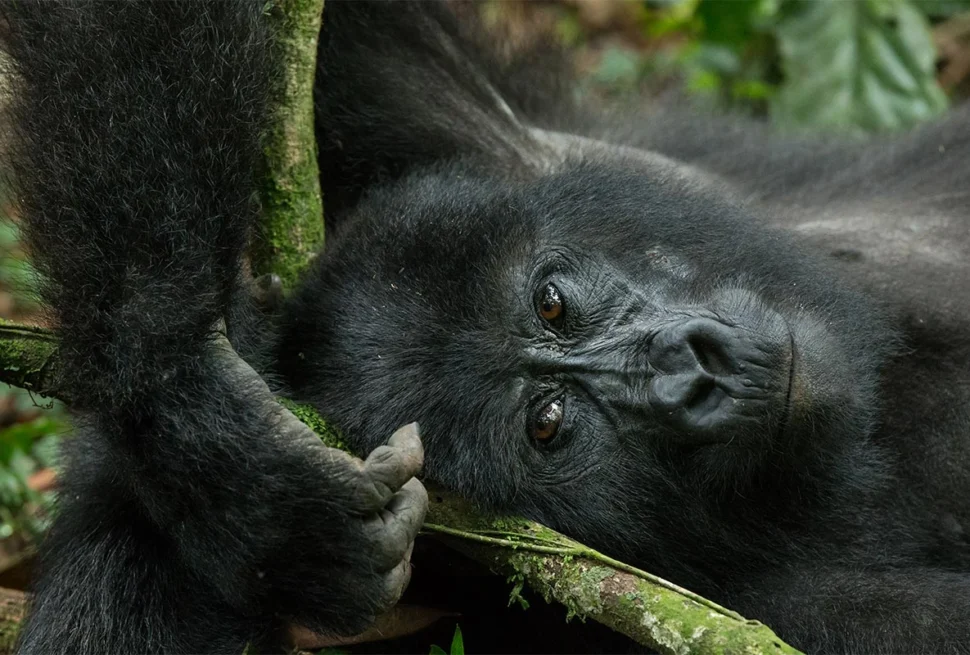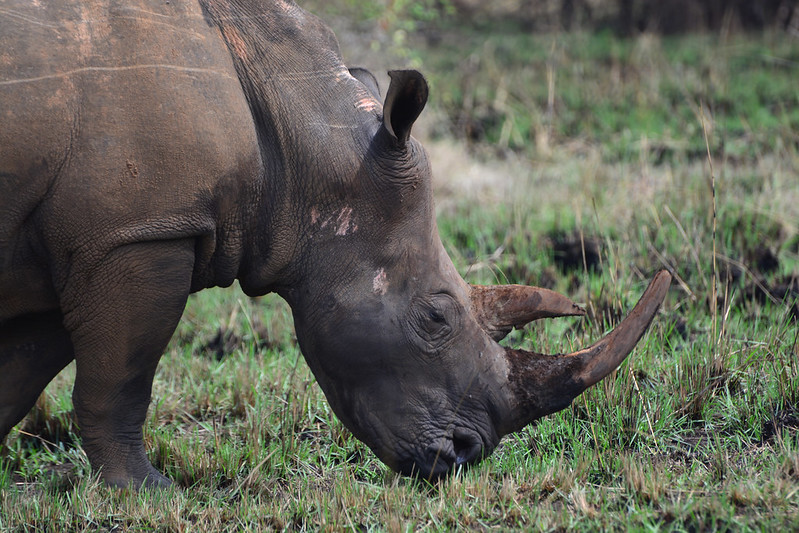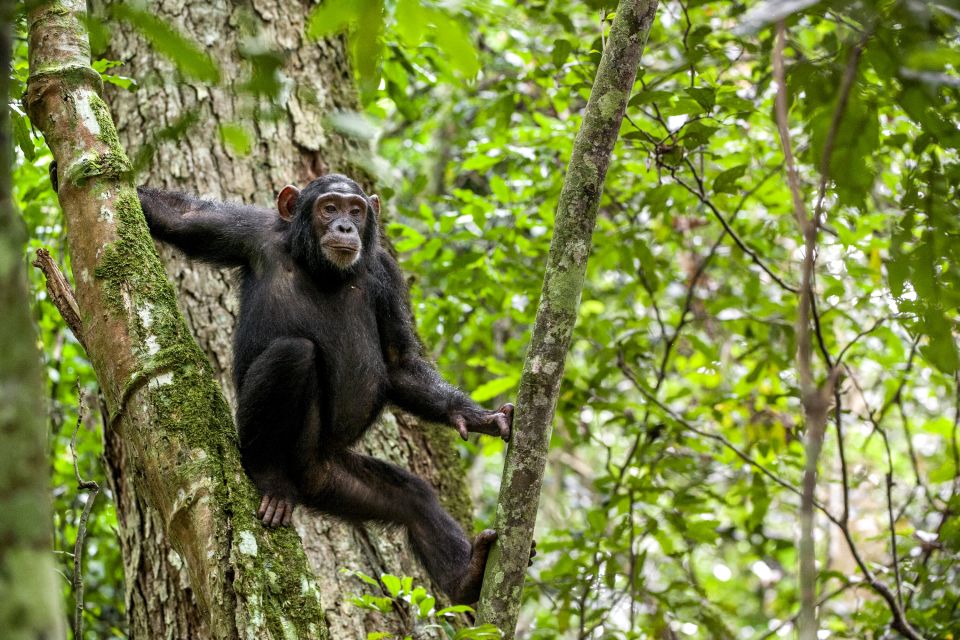January in Rwanda heralds the beginning of the dry season, making it an ideal time to embark on a safari adventure in this East African gem. With its lush landscapes, diverse wildlife, and vibrant culture, Rwanda promises a safari experience like no other. Below is a detailed guide to planning your Rwanda safari in January.
Which places can I visit in Rwanda in January?
Volcanoes National Park: Home to the iconic mountain gorillas, Volcanoes National Park offers the chance to trek through dense forests and encounter these majestic primates up close. Other than mountain gorillas, Volcanoes National Park is an ideal destination to see many primates. From golden monkeys to white colobus monkeys, Volcanoes National Park remains an untamed beauty.
Akagera National Park: Explore the savannas, lakes, and wetlands of Akagera National Park, where you can spot a variety of wildlife including elephants, lions, giraffes, and hippos. A game drive in Akagera National Park allows you to discover some of the hidden treasures. Imagine getting face to face with one of the big five animals. A January safari to Akagera National Park introduces travelers to multiple animals. These include; zebras, leopards, elephants, lions, antelopes, warthogs, and many more. A boat cruise on Lake Ihema is a dream come true for many travelers. It allows you spot many hippos and crocodiles.
Nyungwe National Park: Located in the western part of Rwanda close to the Democratic Republic of Congo, Nyungwe National Park is one place you should visit on a January safari to Rwanda. The park is a famous home for chimpanzees and many other primates.It allows travelers to take a canopy walk and witness hundreds of bird species. Book a chimpanzee trekking permit to Rwanda and enjoy an amazing Rwanda safari January or any other time of the year.
What to do on a Rwanda safari in January?
Gorilla Trekking Experience: Embark on a guided gorilla trekking expedition led by experienced guides who will lead you through the forest in search of gorilla families, providing insights into their behavior and habitat. Gorilla trekking permits are in high demand, so it is essential to secure yours well in advance through an authorized tour operator like Kashari Tours and Travel.
Wildlife Safari Adventures: Enjoy game drives in Akagera National Park, where you can encounter a diverse range of wildlife against the backdrop of sweeping savannas and shimmering lakes. Take a boat safari along Lake Ihema to spot hippos, crocodiles, and a myriad of bird species, offering a unique perspective on the park’s ecosystem.
Cultural Encounters: Immerse yourself in Rwanda’s vibrant culture by visiting local communities, interacting with residents, and learning about traditional practices and customs. Attend cultural performances showcasing traditional dances, music, and rituals that highlight Rwanda’s rich heritage and storytelling traditions.
Where to stay on a Rwanda safari in January?
There are various accommodation options available near Volcanoes National Park, ranging from luxury lodges to cozy guesthouses and tented camps. Choose accommodation that suits your preferences and budget for a comfortable stay during your gorilla trekking adventure.
Luxury Lodges: Indulge in luxury accommodation options located near national parks, offering comfort, exceptional service, and stunning views of the surrounding landscapes.
Tented Camps: Experience the thrill of staying in tented camps nestled in the heart of nature, providing a closer connection to Rwanda’s wilderness and wildlife.
Rwanda gorilla trekking in January
In January, Rwanda offers an excellent opportunity for gorilla trekking in its famed Volcanoes National Park. If you are planning a gorilla trekking safari to Rwanda in January, you may need to know these;
Weather Conditions: January marks the beginning of the dry season in Rwanda, offering favorable weather conditions for gorilla trekking. Expect warm days and clear skies, making it an ideal time to explore the lush forests of Volcanoes National Park.
Gorilla Families: Volcanoes National Park is home to several habituated gorilla families, each offering a unique glimpse into the lives of these endangered primates. The park’s dense vegetation and volcanic terrain provide a stunning backdrop for your trekking adventure.
Permit Availability: Gorilla trekking permits are in high demand throughout the year, including in January. It is crucial to secure your permits well in advance authorized tour operators to ensure availability for your desired trekking dates.
Trekking Experience: Gorilla trekking in Volcanoes National Park involves hiking through the forest with experienced guides and trackers in search of a gorilla family. The trek can vary in duration and intensity depending on the location of the gorillas on that day.
Meeting the Gorillas: Encountering mountain gorillas in their natural habitat is a truly magical experience. You’ll have the chance to observe these gentle giants as they go about their daily routines, including feeding, playing, and interacting within their family groups.
Guidelines and Etiquette: To ensure the safety and well-being of the gorillas, visitors are required to follow strict guidelines during the trekking experience. This includes maintaining a safe distance, refraining from direct eye contact, and following the instructions of your guides at all times.
What to Pack: When preparing for gorilla trekking in January, it is essential to pack appropriate clothing for varying temperatures and conditions. Lightweight, breathable layers, sturdy hiking boots, a rain jacket, sunscreen, insect repellent, and a good camera for capturing memories are recommended.
Responsible Tourism: As you embark on your gorilla trekking experience in Rwanda, remember the importance of responsible tourism practices. Respect the gorillas and their habitat, support local conservation efforts, and contribute to the sustainable development of the communities surrounding the park.
Gorilla trekking in Rwanda in January promises an unforgettable wildlife encounter amidst the stunning landscapes of Volcanoes National Park. Prepare for an immersive and awe-inspiring experience as you come face to face with these magnificent creatures in their natural environment, creating memories that will last a lifetime.
Visiting Akagera National Park in January
Exploring Akagera National Park in Rwanda in January offers a fantastic opportunity to witness diverse wildlife, stunning landscapes, and unique ecosystems. Below is what you can expect when visiting Akagera National Park during this time of the year:
Weather Conditions: January falls within the dry season in Rwanda, providing pleasant weather conditions for wildlife viewing and outdoor activities in Akagera National Park. Expect clear skies, warm temperatures during the day, and cool nights, making it a comfortable time to explore the park.
Wildlife Sightings: Akagera National Park is home to a wide variety of wildlife, including elephants, lions, zebras, giraffes, buffaloes, hippos, crocodiles, and numerous bird species. January offers excellent opportunities for spotting these animals as they congregate around water sources during the dry season.
Game Drives: Embark on guided game drives through the park’s savannas, woodlands, and wetlands to observe wildlife in their natural habitats. Experienced guides will lead you to prime viewing spots where you can witness the park’s diverse fauna up close.
Boat Safaris: Take a boat safari along the picturesque Ihema River, which flows through Akagera National Park. This experience allows you to see hippos, crocodiles, water birds, and other aquatic wildlife from a different perspective, offering unique photo opportunities.
Birdwatching: Akagera is a haven for birdwatchers, with over 500 bird species recorded in the park. January is an excellent time for birdwatching as migratory species join the resident birds, creating a vibrant and diverse avian population to admire.
Guided Tours: Consider joining guided tours or hiring a knowledgeable local guide to enhance your wildlife viewing experience in Akagera National Park. Guides can provide valuable insights into the park’s ecology, wildlife behavior, and conservation efforts.
Photography Opportunities: Capture the beauty of Akagera’s landscapes and wildlife through your lens. January’s clear skies and favorable lighting conditions present great opportunities for photography, whether you’re capturing wildlife portraits or sweeping vistas.
Accommodation Options: Choose from a range of accommodation options within or near Akagera National Park, including lodges, tented camps, and campsites. These accommodations offer comfortable stays and immersive experiences in the heart of the park’s wilderness.
Conservation and Community Engagement: Support conservation initiatives and local communities by visiting Akagera National Park. Learn about the park’s conservation programs, sustainable tourism practices, and efforts to protect Rwanda’s natural heritage.
Conclusively, planning a Rwanda safari in January offers a perfect opportunity to immerse yourself in the natural wonders, wildlife experiences, and cultural treasures of this captivating country. With careful preparation, a spirit of adventure, and a willingness to embrace new experiences, your Rwanda safari in January is sure to be a journey filled with unforgettable moments and lasting memories. Prepare to be enchanted by Rwanda’s beauty and hospitality as you embark on a safari adventure that promises to be truly extraordinary.



